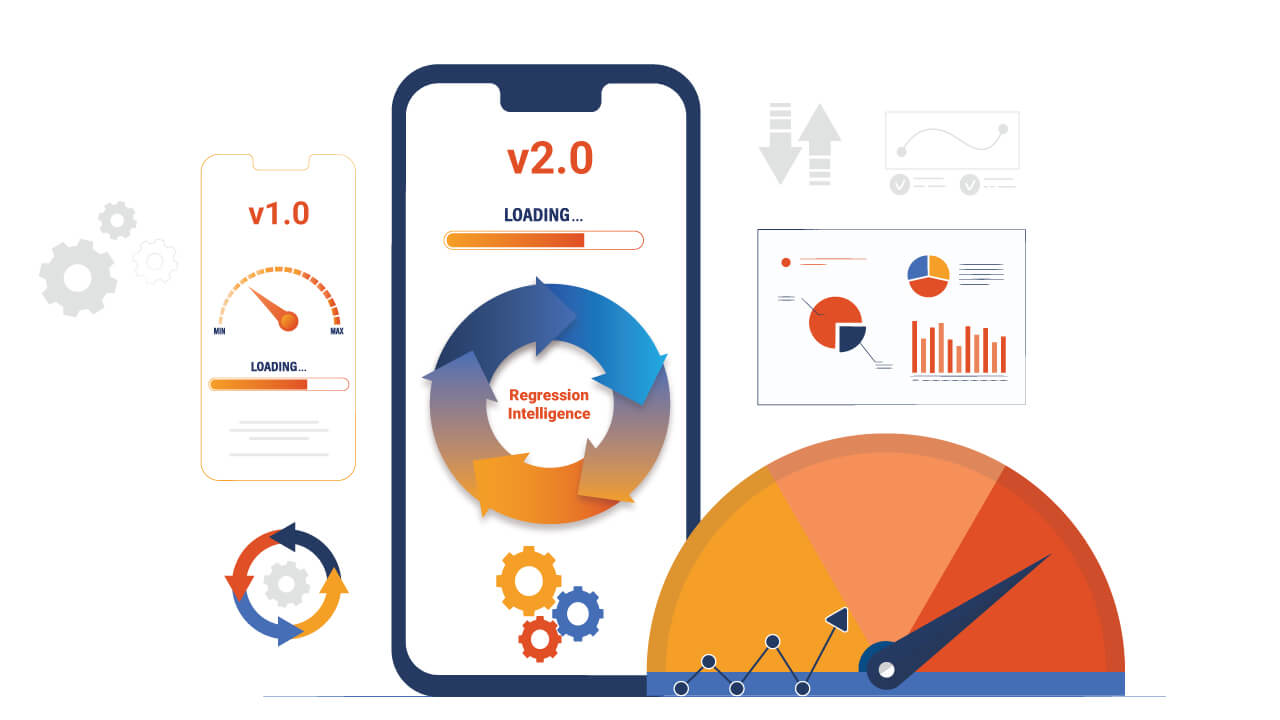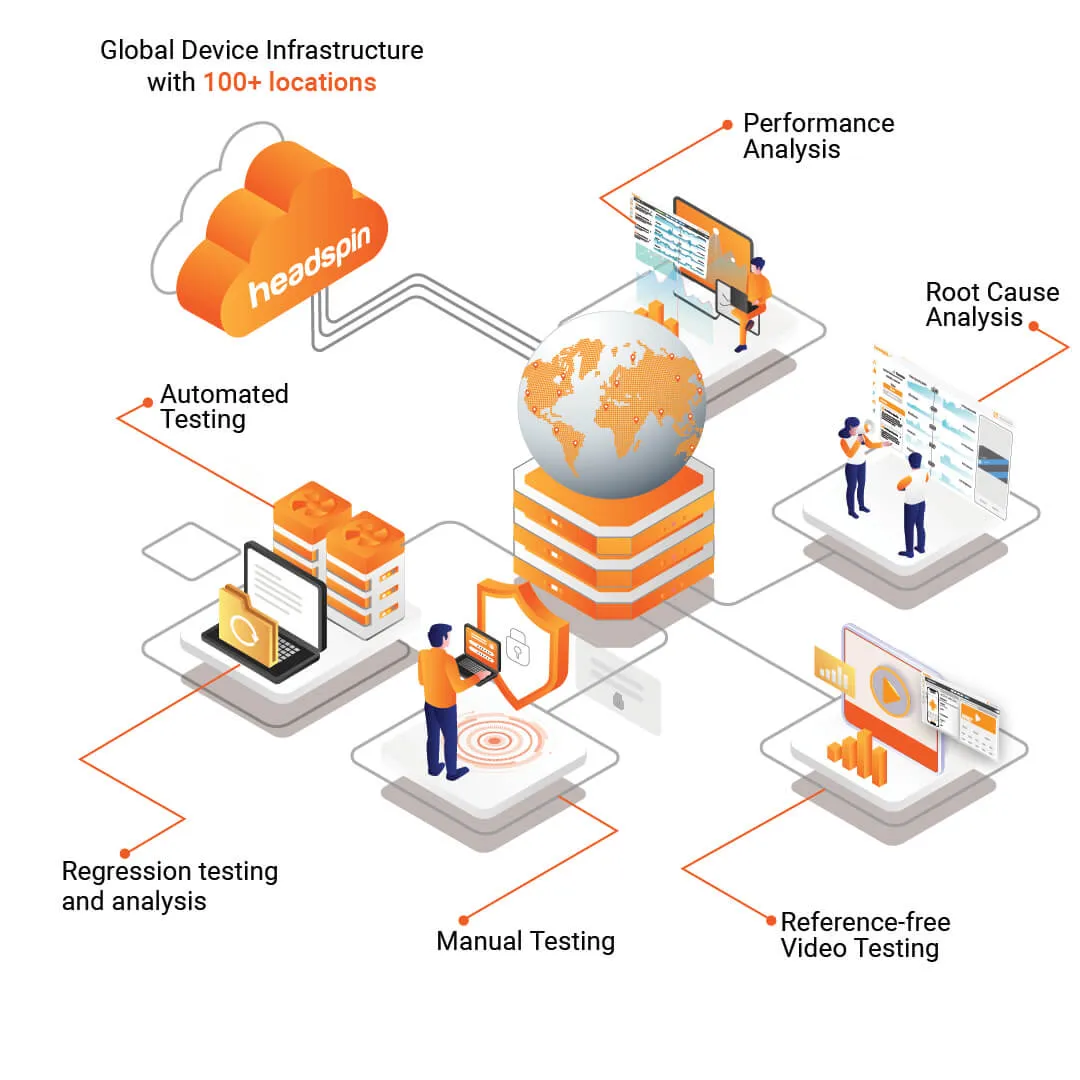Digital-first telecom companies operate entirely online without physical customer touchpoints, making their mobile apps the sole interface for all customer interactions.
Whether it’s activating an eSIM, swapping a SIM, updating a plan, or purchasing a new device, every feature must be thoroughly tested before it reaches users.
This raises a key question for many teams:
Should we build and manage our own in-house device lab?
Building an internal lab seems appealing, with no external dependencies, and you can customize the setup exactly how you want.
But telecom testing has unique complexities that most teams underestimate.
Testing Scope Goes Beyond Basic Functionality
Telecom apps connect to SIM cards, carrier networks, and billing systems to enable essential features, so testing must verify these connections work under various conditions.
So, what does this involve?
Covering SIM Activation on All Supported Devices
Modern telecom apps need to support both eSIM and physical SIM users. That includes testing SIM activation through QR codes, switching SIMs between devices, and handling outdated devices that may not fully support specific flows. These scenarios often fail if not tested on the actual device and network combinations your users rely on.
Service Workflows
The app handles everything from onboarding and billing to troubleshooting and device upgrades. So, to ensure end-to-end reliability in customer journeys, testing must extend to flows such as periodic plan changes, payment retries, number porting, and device compatibility across all supported devices and networks.
Real Network Conditions and Locations
Your users access the app across different cities and states and fluctuating network environments such as 5G, LTE, low-signal zones, or mid-call handoffs. Without testing under these real conditions, critical features like Wi-Fi calling or plan updates can silently fail in production.
These testing requirements create a continuous operational burden. While building an internal lab may seem like a way to gain control, maintaining it at telecom scale requires constant work to stay aligned with real-world conditions. This ongoing effort often pulls teams away from actual product development. Let’s talk about what it takes to manage an in-house device lab.
The day-to-day effort required to Manage In-House Device Labs
- Device Replacement and Repair
Test devices undergo constant use, and over time, their hardware begins to fail. This includes degradation of batteries, loosening of charging ports, and damaged screens. Adding a new device or replacing an older one means setting up, registering, and testing that device, which actually contributes nothing to the actual testing goals. - OS and Firmware Updates
Whenever Apple or Google releases a new OS update, every test device needs to be updated and revalidated. If even one device is running an older version, key flows, such as SIM activation or app permissions, can fail unexpectedly. Teams then waste time chasing bugs that turn out to be version mismatches instead of real issues. - Infrastructure Disruptions Stop Everything
A single bad USB hub, a blown power supply, or a broken rack can halt entire workflows. Unlike cloud infrastructure, these failures don’t alert automatically or trigger a failover. Teams often discover this only when test sessions stop running, causing delays that no one had budgeted for.
How does this affect release cycles?
When teams work in tight two to four-week sprints, they can't afford delays caused by infrastructure issues. If devices aren’t available, test scripts are outdated, or results are unreliable, features can’t be properly validated, and releases get delayed.
What starts as a minor hold-up leads to missed release windows. Over time, it is not the code that causes delays but the test environment itself.
Teams End Up Working in Silos
Maintaining separate test setups across app, billing, and network teams leads to duplication of effort and slows down issue resolution.
Each team runs its own devices, environments, and scripts, resulting in inconsistent configurations and missed bugs. Without a shared view of test results, teams rely on manual data collection and cross-checking to trace issues, which takes time.
When a failure occurs, such as an eSIM activation issue, it’s unclear where the problem lies, and each team waits for the others for input. This lack of coordination delays fixes and pushes them into future sprints, ultimately slowing down the entire release cycle.
Advantages of Having a Centralized Device Farm for Testing
Consistent Coverage Across Devices and OS Builds
A centralized lab ensures that all test teams work from a pool of real devices. This avoids gaps in test coverage that often emerge when individual teams maintain their own smaller setups and skip less common variants. For telecom apps, these edge cases typically account for the majority of support tickets.
Shared Visibility for Faster Debugging
In a centralized setup, every test session is captured and stored in a familiar environment. Teams don’t need to replicate test scenarios across labs. The app team, backend engineers, and network team can all access the session data when an issue arises.
Reliable Integration with CI/CD Pipelines
Central device farms are typically built with CI/CD workflows in mind. Tests can be automatically triggered with each build and run across a known set of devices and environments, eliminating the need for manual scheduling or coordination between teams. This provides consistent test feedback throughout the sprint.
Everything you need for telecom-grade testing is available in HeadSpin
At HeadSpin, a dedicated global team manages this complexity behind the scenes, allowing your QA, network, and platform teams to focus on delivering quality.
Always Forefront of Innovation
HeadSpin continuously advances its global infrastructure to support telecom-specific testing needs. From running tests on both physical SIMs and eSIMs across real locations and networks to remotely switching SIM profiles using HeadSpin’s Multi-SIM Switcher Box (MSSB), every layer is purpose-built. Teams can even test using their own devices hosted at their premises through pBoxes, offloading platform burdens while retaining full access and control over devices.
Expert-managed infrastructure in place, 24/7
Devices are hosted across secure data centers, with power, cooling, and physical access all professionally maintained. Firmware updates and OS versions are actively updated by a dedicated operations team, so your teams never have to worry about misaligned test environments or outdated builds.
One environment, built for team collaboration
HeadSpin captures every test session with logs, metrics, and screen recordings. Testing teams can use the same data to debug issues in one place, eliminating the need to recreate testing scenarios in different setups.
Ready for release cycles that don’t pause
HeadSpin keeps real devices ready for testing at all times. You can integrate with over 60 automation frameworks, including Selenium, Appium, and XCTest, to trigger tests directly from your CI/CD pipelines. This enables faster execution and reliable test coverage without the overhead of manual setup or lab maintenance.
A Smarter Way Forward
For telecom teams, testing on real devices under real conditions is non-negotiable. But trying to build and manage that infrastructure internally often creates more problems than it solves, slowing teams down, introducing fragmentation, and pulling focus away from product work.
The way forward isn’t about owning more hardware. It’s about having access to the right devices, networks, and test environments when you need them, without the ongoing operational cost.
Think your testing setup supports your release velocity? Let us talk!













































-1280X720-Final-2.jpg)






